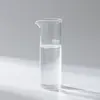+86-15212299029
- All
- Product Name
- Product Keyword
- Product Model
- Product Summary
- Product Description
- Multi Field Search
Views: 220 Author: tcchems Publish Time: 2025-11-06 Origin: Site











Content Menu
● Understanding Phosphate Buffers
>> What is a Phosphate Buffer?
>> Chemicals
>> Equipment
>> Step 1: Calculate the Required Amounts
>> Step 2: Dissolve the Chemicals
>> Step 4: Measure and Adjust the pH
>> Step 5: Finalize the Buffer
>> Storage
● Applications of pH 6.8 Phosphate Buffer
>> In Pharmaceutical Formulations
Phosphate buffers are essential in various biological and chemical applications, particularly in maintaining a stable pH in solutions. The pH 6.8 phosphate buffer is commonly used in laboratory settings, especially in pharmaceutical formulations and biochemical assays. This article will guide you through the preparation of a pH 6.8 phosphate buffer according to the United States Pharmacopeia (USP) standards, detailing the necessary materials, step-by-step procedures, and important considerations.

A phosphate buffer is a solution that resists changes in pH when small amounts of acid or base are added. It is composed of a weak acid (dihydrogen phosphate) and its conjugate base (hydrogen phosphate). The phosphate buffer system is particularly effective in the physiological pH range, making it ideal for biological experiments.
The pH 6.8 buffer is significant in various applications, including:
- Biological assays: Many enzymes and biochemical reactions are optimized at this pH.
- Pharmaceutical formulations: Ensures stability and solubility of active ingredients.
- Cell culture: Provides an optimal environment for cell growth and maintenance.
To prepare a pH 6.8 phosphate buffer, you will need the following materials:
- Sodium Dihydrogen Phosphate (NaH2PO4): This is the weak acid component of the buffer.
- Disodium Hydrogen Phosphate (Na2HPO4): This acts as the conjugate base.
- Distilled Water: For diluting the buffer components.
- pH Meter: To accurately measure the pH of the solution.
- Volumetric Flask: For preparing the buffer solution.
- Beakers: For mixing the components.
- Magnetic Stirrer: To ensure thorough mixing of the solution.
- Pipettes: For measuring small volumes of liquids.
To prepare 1 liter of pH 6.8 phosphate buffer, you will typically need:
- 21.72 g of Sodium Dihydrogen Phosphate (NaH2PO4)
- 4.94 g of Disodium Hydrogen Phosphate (Na2HPO4)
These amounts can vary slightly based on the specific requirements of your experiment, so it is essential to verify the exact concentrations needed.
1. Measure the Chemicals: Accurately weigh the required amounts of NaH2PO4 and Na2HPO4 using a balance.
2. Dissolve in Water: In a beaker, add approximately 800 mL of distilled water. Gradually add the sodium dihydrogen phosphate and stir until completely dissolved.
3. Add Disodium Hydrogen Phosphate: Next, add the disodium hydrogen phosphate to the solution and continue stirring until fully dissolved.
Once both salts are dissolved, transfer the solution to a 1-liter volumetric flask. Rinse the beaker with distilled water and add the rinsing to the flask to ensure all chemicals are transferred. Then, add distilled water to bring the total volume to 1 liter.
1. Check the pH: Use a calibrated pH meter to measure the pH of the solution. It should be around 6.8.
2. Adjust if Necessary: If the pH is not at the desired level, you can adjust it by adding small amounts of either NaOH (to increase pH) or HCl (to decrease pH). Stir the solution thoroughly after each addition and recheck the pH.
Once the pH is adjusted to 6.8, your phosphate buffer is ready for use. It is advisable to store the buffer in a clean, labeled container to avoid contamination.
Phosphate buffers should be stored in a cool, dark place to prevent degradation. They can typically be stored for several weeks if kept sterile and sealed.
Before measuring the pH, ensure that your pH meter is calibrated with standard buffer solutions. This ensures accurate readings.
Always use deionized or distilled water to prepare buffers, as tap water may contain ions that can alter the pH.
The buffer capacity of a solution is its ability to resist changes in pH. The phosphate buffer is effective within a specific pH range, and its capacity can be influenced by the concentrations of the components used.
Phosphate buffers are widely used in biochemical research for enzyme assays, protein purification, and other applications where maintaining a stable pH is crucial.
In the pharmaceutical industry, pH 6.8 phosphate buffers are often used in the formulation of oral and injectable medications to ensure stability and bioavailability.
Cell culture media often utilize phosphate buffers to maintain the physiological pH required for optimal cell growth and function.
Preparing a pH 6.8 phosphate buffer is a straightforward process that requires careful measurement and adjustment of components. By following the outlined steps, you can create a reliable buffer solution suitable for various laboratory applications. Understanding the importance of pH in biological systems will enhance your experimental outcomes and ensure the integrity of your results.

1. What is the purpose of a phosphate buffer?
- A phosphate buffer maintains a stable pH in solutions, which is crucial for many biochemical and biological processes.
2. How long can I store a phosphate buffer?
- Phosphate buffers can typically be stored for several weeks if kept sterile and in a sealed container.
3. Can I use tap water to prepare the buffer?
- It is recommended to use deionized or distilled water to avoid contamination and pH alterations.
4. What should I do if the pH is not at 6.8?
- Adjust the pH by adding small amounts of NaOH to increase or HCl to decrease the pH, stirring thoroughly after each addition.
5. Why is pH 6.8 commonly used?
- pH 6.8 is optimal for many biological reactions and is often used in pharmaceutical formulations and cell culture.
Hot Tags: China, Global, OEM, private label, manufacturers, factory, suppliers, manufacturing company



